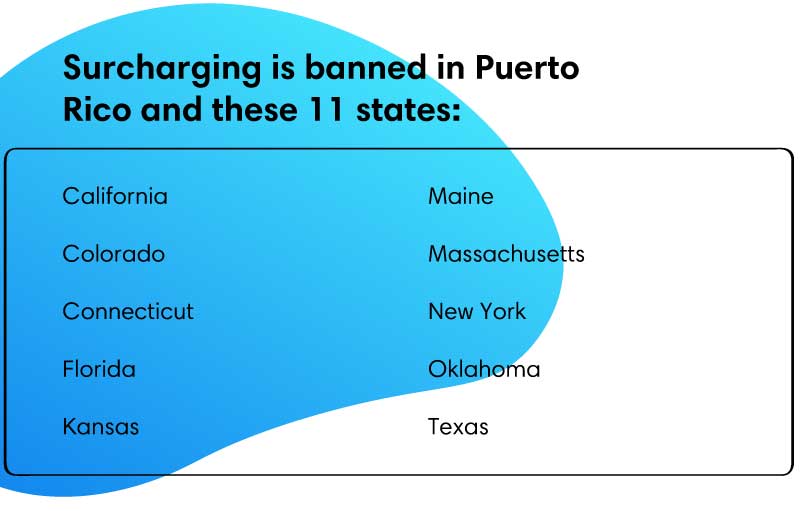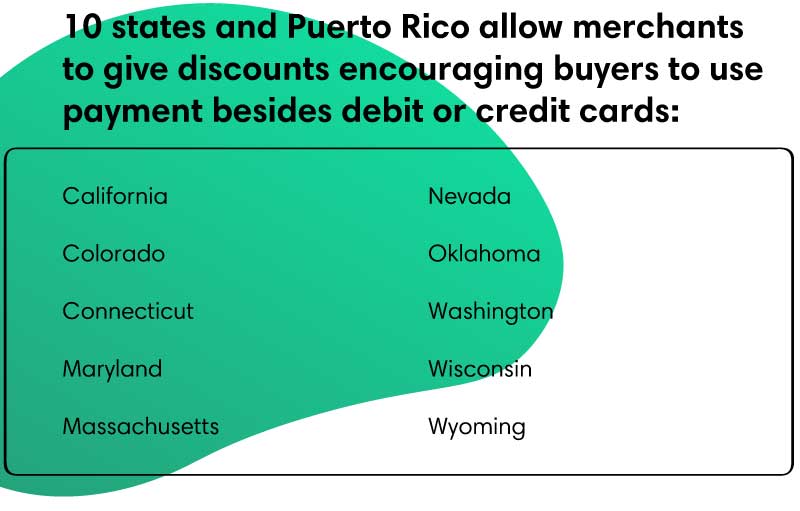What Is a Cash Discount Program?
Cash discount programs allow merchants to offset the processing fees that they incur.
However, there’s a lot of confusion between cash discounts and surcharges.
Cash discount programs are exactly what they sound like. A seller (you) posts credit card prices on items and offers a discount on those prices to customers who pay with cash.
This is not to be confused with a different type of cash discount, in which sellers offer a discount on an invoice if the buyer pays the bill before the scheduled due date, thus shortening the seller’s cash conversion cycle (the time it takes to convert resources to cash flows).
How Does It Work?
Let’s say you have two customers looking to make a $100 purchase. One customer plans to use a credit card; the other plans to use cash.
You have conspicuous signage informing them of your cash discount program. If customers pay with a card, they’ll pay an additional 4% processing fee.
The first customer checks out and uses their card. The terminal prompts them to accept the total with the 4% fee applied. The transaction goes through, adding the processing fee. This cancels out your processing costs for that purchase.
Then, the second customer checks out with cash. Since you don’t have to process payment through their credit card company, you don’t have any processing fees for their purchase, which is why you don’t charge them the additional 4% fee.
Basically, a cash discount program is designed to cancel out your processing fees if a customer pays with their credit card.
Surcharging vs. Cash Discount
A surcharge is when a merchant adds an additional fee, charge, or tax on top of the initial quoted price for a good or service.
For example, you would be surcharging if you posted cash prices and charged an additional fee onto that price if customers pay with a card.
Can you see where things get messy?
A cash discount is when you post credit card prices and offer a discount for customers who pay with cash. A surcharge is when you post cash prices and add an additional fee for customers who pay with cards.
In the first scenario, the customer pays less than the listed price. In the second scenario, the customer pays more than the listed price.
Sounds like a semantics issue, doesn’t it? Here’s the catch: if you charge more at the register than the listed price, it’s a surcharge, regardless of what the processor calls it.
That’s important because it changes the legality and compliance rules attached to the transaction.
The Durbin Amendment
The Durbin Amendment is part of a larger Wall Street reform bill designed to limit transaction fees imposed on merchants by debit card issuers.
Basically, the amendment states that card issuers cannot restrict the ability of merchants to offer cash or card discounts at the merchant’s own discretion. Under the Durbin Amendment, a discount:
- Is a reduction from the price which customers are informed is the regular price, and
- Does not include any means of increasing the price which customers are informed is the regular price
In other words, a discount must be a reduction in price, not an increase.
State Bans and Statutes
You’re probably wondering: what’s all the fuss about?
Distinguishing between a surcharge and a cash discount is important because it changes the legality of the transaction. Surcharging is banned in Puerto Rico and 11 states:

However, 10 states and Puerto Rico allow merchants to give discounts encouraging buyers to use payment besides debit or credit cards:

Either way, cash discounts are not prohibited in any state–as long as you follow the right procedure to ensure that this is a cash discount program and not surcharging.
Debit Card Bans and Visa’s Statement
In addition, surcharges are never permitted on debit cards, even if the debit card is run as a credit card and even in states where surcharging is legal.
Visa released a statement regarding surcharging and cash discount programs. They clearly differentiate between cash discounts and surcharging. The ability to surcharge only applies to credit card purchases and only under certain conditions.
Merchants are allowed to encourage buyers to use other methods of payment than cards. However, debit cards cannot be surcharged under any circumstances.
How Do You Build a Cash Discount Program?
What makes your program a cash discount program and not a surcharging program?
Simple: signage.
If the posted regular price is the price for cards and customers who pay with cash are given a lower price, it’s a cash discount program. If the posted regular price is the price for cash and customers who pay with cards are charged extra, it’s surcharging.
BUT you must also have clear signage throughout your business stating that you offer a cash discount program.
Are You Implementing Cash Discount Programs?
Thinking of implementing cash discount programs at your business locations? Trying to master your payment systems, cash or otherwise?
We can help.
We know that the world of credit processing can be murky. That’s why we promise to offer you the best services for reasonable prices, every time.